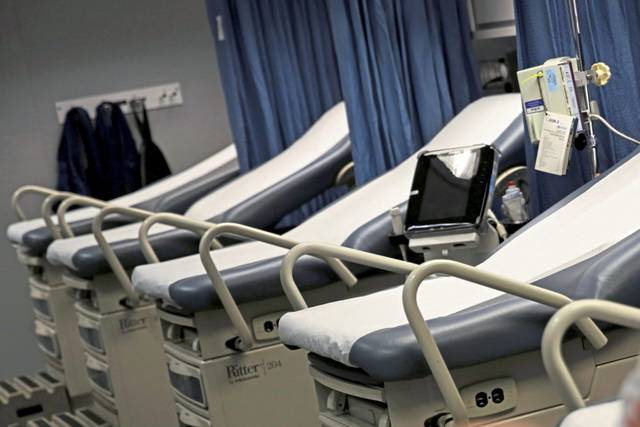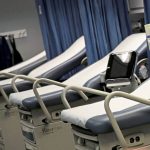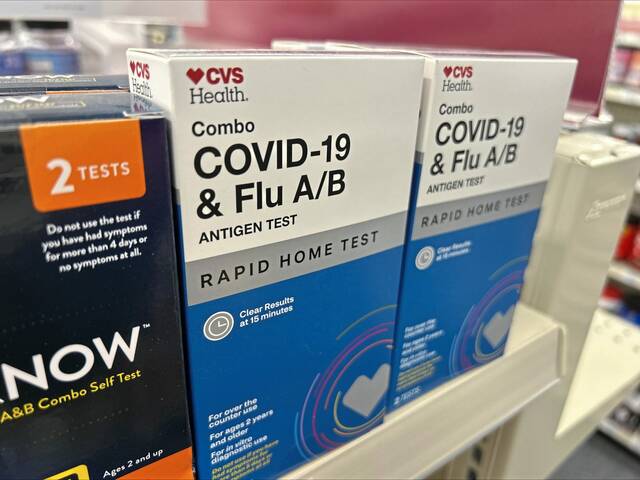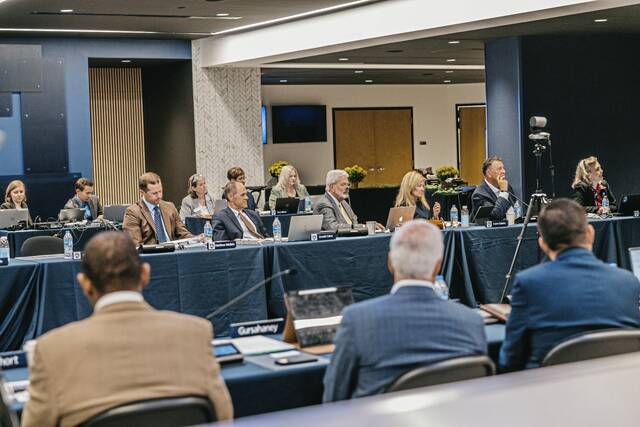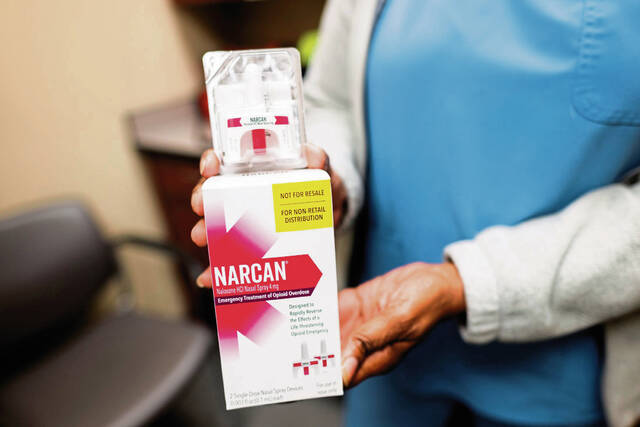More than one-third of hospitals in Southwestern Pennsylvania anticipate staffing shortages in the coming week.
It’s a threshold that, if paired with a further surge in hospital admissions, could force a cutback in elective surgeries.
Secretary of Health Rachel Levine noted the rising number of covid-19 hospital admissions across the state — about 5,000 as of Thursday morning. She called the rising admissions a significant concern.
Claire Zangerle, chief nurse executive for Allegheny Health Network, noted most health systems were experiencing a nursing shortage even before the pandemic.
“The pandemic just made the current nursing shortage even worse,” she said. “We had become pretty adept at managing our staffing and flexing our staffing and figuring out how to manage with fewer staff than we normally have, but this is a whole new ball game.”
Last month, Levine laid out a series of thresholds that, if met, will require hospitals in a region to reduce elective surgeries by 50%. The seven regions, called Health Care Coalitions, were established years ago as part of the state’s emergency preparedness plans.
Hospitals in an HCC region must scale back surgeries if two of three conditions are met:
• 33% or more of hospitals in the region anticipate staffing shortages in the next week;
• 50% or more increase in the moving average of covid-19 admissions in the previous 48 hours;
• 10% or fewer of the medical and surgical beds in a region are projected to be available in the next 72 hours.
Levine said only two regions have broken any thresholds — the Southwest region and the Keystone region.
The Southwest region is made up of Allegheny, Armstrong, Beaver, Butler, Cambria, Fayette, Greene, Indiana, Lawrence, Mercer, Somerset, Washington and Westmoreland counties. The Keystone region covers 16 counties in the central part of the state.
In the Southwest and Keystone regions, a third or more of hospitals have indicated they’ll likely suffer staffing shortages in the next week.
“You might not need hospital care right now,” Levine said. “You might not have a loved one in the hospital right now. But what is happening in our hospitals has a direct impact on you — it has a direct impact on the mitigation steps you have to take in order to contain the spread of the virus.”
She said the impact goes beyond the hospital, affecting health care workers and the communities in which they live.
“We are certainly not through this, and we cannot return to life as normal right now,” she said.
“We’re starting to pull some levers we didn’t need to pull in the first surge,” Zangerle said. “We’re lucky to have those levers.”
Few intensive care beds left
According to data from the Department of Health, about 14.6% of adult intensive care unit beds across the state are available — about 616 in total. About 14.5% of medical/surgical beds statewide are available — about 2,900.
In Allegheny County, just over 11% of adult ICU beds in the county remain available — about 91 beds in total. About 15.3% (507) medical/surgical beds are available, along with 29.2% (14) pediatric ICU beds.
Westmoreland County has about 27.8% (25) of 90 adult ICU beds available along with 17.5% (46) medical/surgical beds.
Excela Health, which operates hospitals in Greensburg, Latrobe and Mt. Pleasant, had 108 covid-positive patients, seven of whom are on ventilators, as of Dec. 3, according to health department data.
Excela Health spokeswoman Robin Jennings said the health system is experiencing the same conditions as other hospitals.
At the Armstrong Center for Medicine and Health (the former ACMH Hospital) near Kittanning, seven of 12 ICU beds were available as of Dec. 3, with 14 covid cases.
Scrambling for nurses
Zangerle said Allegheny Health Network has had to call in nurses from ambulatory clinics to relieve some stress on in-patient nurses. She said the clinic nurses don’t always take on a full patient assignment, as they’ve often been working in outpatient care for years.
She worries about her staff burning out soon.
“If we’d been doing this for maybe a month, we wouldn’t think twice about it — it’d be like, ‘OK, this is a blip,’ ” she said. “But we’ve been doing it for nine months.”
To help with patient workload — and to give permanent nurses a chance to take a break and try to come back refreshed — AHN has utilized traveling nurses and those with nursing agencies.
An understaffed hospital could mean fewer beds, said Dr. Amesh Adalja, an infectious disease and critical care physician.
“Hospitals have a certain number of beds, but then they have another number called ‘staff beds,’ ” he said. “That will decrease the capacity because you may not necessarily open beds if you don’t have the nurses to assign to them. That plays a role in how much a hospital can do.”
Butler Health has no ICU beds
Intensive care units already are at capacity in two Western Pennsylvania hospitals. Officials with Butler Health System said in a release Wednesday units at Butler Memorial and Clarion hospitals are full, and the health system has activated phase one of its surge plan.
The plan includes converting Butler Memorial’s post-anesthesia care unit into an intensive care unit, which will add 15 more critical care beds in the hospital.
The health system will suspend all nonemergency elective surgeries and procedures that would require an in-patient stay, a move officials hope will free up as many beds as possible. Nurses are being reassigned to departments with the greatest need.
The state’s hospital data dashboard shows there are five adult ICU beds remaining in Butler County, along with 61 medical/surgical beds.
At UPMC
At UPMC’s hospitals, officials have been working since spring to make sure they don’t reach the critical staffing shortages that could affect patient care, said Dr. Donald Yealy, the health system’s chair of emergency medicine.
“There are more patients presenting with concerns about covid infection or illness and … more of them requiring inpatient care,” he said. “Even more — a smaller amount but more than before — need intensive care.”
He said the rise in cases hasn’t led to a change in care, and he doesn’t foresee a need to scale down elective procedures. If the health system does reach that point, he said, those decisions should be made on an individual level rather than broadly across the entire system.
“This is a time of increased staffing needs and care needs,” Yealy said, “but to date, we’ve been able to meet all of those needs.”


